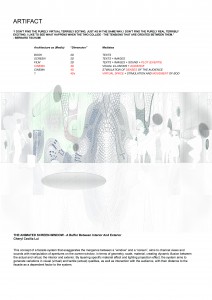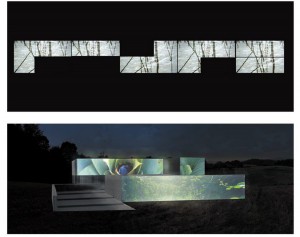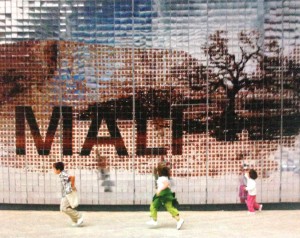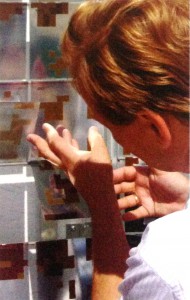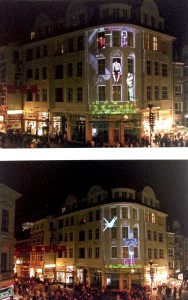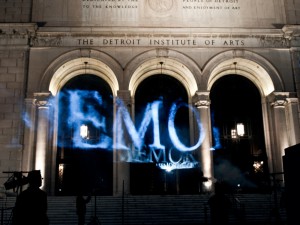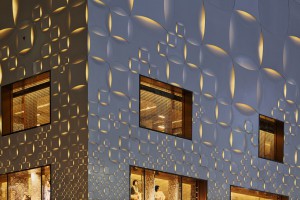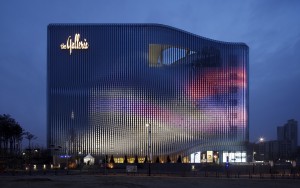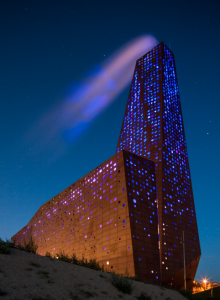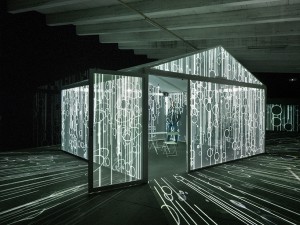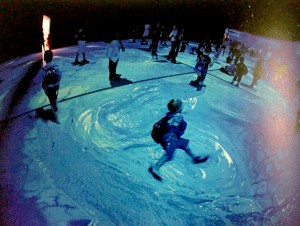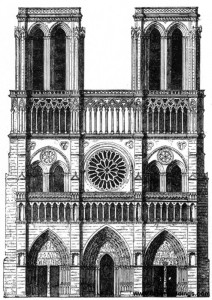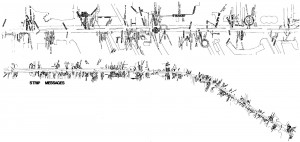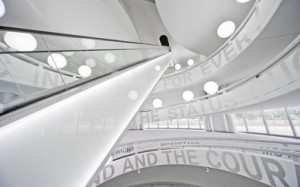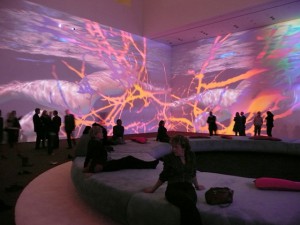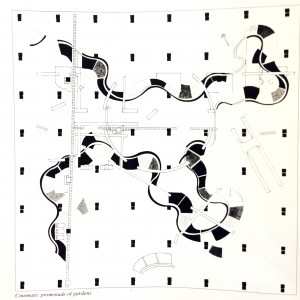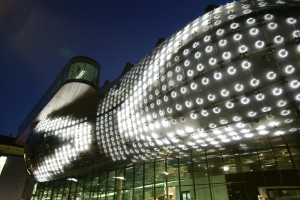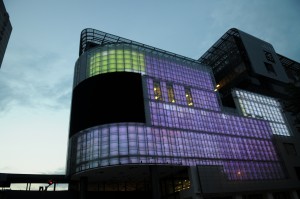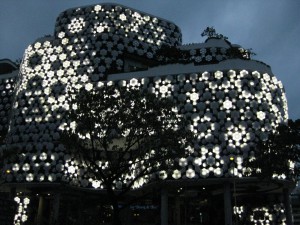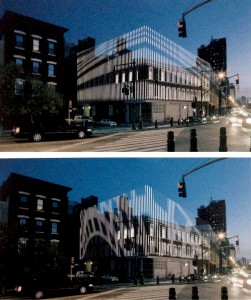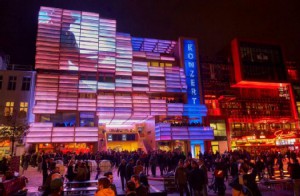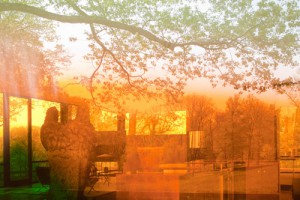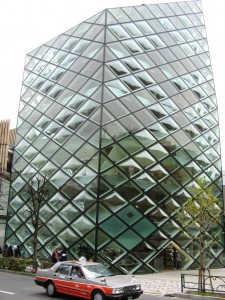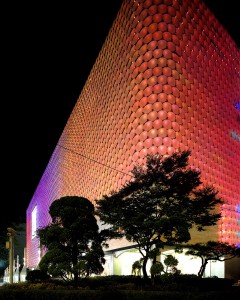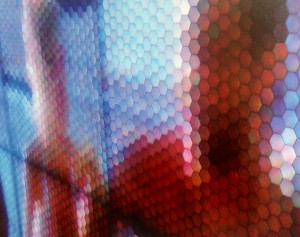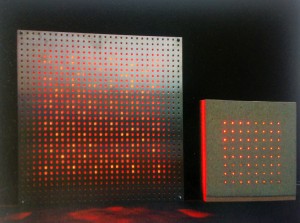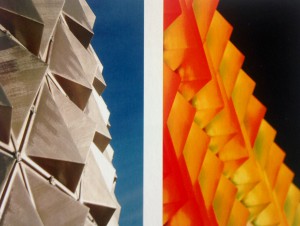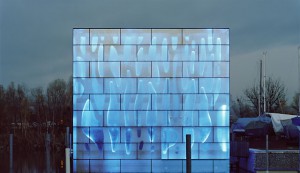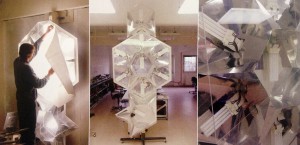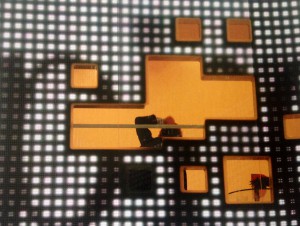4Dx GENERATION: Architecture Without Actual Space
|
ARTIFACT The Screen-window: A buffer between interior and exterior This concept of a facade system that exaggerates the mergence between a “window” and a “screen”, aims to channel views and sounds with manipulation of apertures on the screen-window, in terms of geometry, scale, material, creating dynamic illusion between the actual and virtual, the interior and exterior. By layering specific material effect and lighting projection effect, the system aims to generate variations in visual (virtual) and tactile (actual) qualities, as well as interaction with the audience, with their distance to the facade as a dependent factor to the system.
WHAT?
The project aims to exaggerate the “window” and the “screen” on facade which acts as a buffer between the interior and exterior. This facade system is an informational material interface, which can inform, entertain, advertise and interact. The modes and systems of interactivity is my focus, involving the issues of demographic data, mobility of people, their direct interaction with material interfaces. The thesis seeks to define the thesis as between, not a gallery project, and also not an urban scaled media facade, by working on the architectural and urban repercussions of cinematic media, new smart materials, and the interaction with a populace in public civic space. My design project is a street-level shopfront facade system which serves the interior shop as well as the exterior space for public performance. A site for experiment is the popular busking space in front of MCM, at the busy street corner opposite to Coach in Central, Hong Kong. There is a potential to develop a musical instrument tuning system or instant lyrics dedication system which can communicate with the city of performers and audience, at the same time create an innovative branding technique. The design hybrid, where the relationship between the presenter and the receiver will be parallel and mutual. A new prototype, the 4Dx, happens when the real human sensations and the virtual imagination and space come into mutation – the x factor. The type of media that architecture represents has changed over time. From book to screen, and then to film, to cinema… in these stages the facade is a key element for investigation. The facade has connection with human’s senses or minds when it is close to users, as well as when it is far away. The impact and the degree of stimulation is different for different distances, but the connection remains. The type of connection is the question, whether it is mental, visual, physical, conceptual, virtual.
WHY?
I have been looking at the evolution of architecture over history, and defined them into 2D, 3D and 4D. The 4D involves the creation of a virtual space, with an interaction with the populace. My concept of architecture as 2D book can be illustrated in “Notre-Dame de Paris”, where Hugo expressed his idea of “Architecture is the great book of humanity”. Before the invention of printing press, architecture acted as a medium to mediate virtual texts – concepts. The main historical issue of facade that I am addressing is Robert Venturi’s theory of “shed” and signboard architecture in “Learning from Las Vegas”, the detachment of facadefrom architecture. While architecture as film can be seen in Bernard Tschumi’s projects. The cinematic strip of gardens and the implementation of “Manhattan Transcript” in his Parc de la Villette shows the focus on the events instead of space, which comes naturally as a consequence. The passive relationship between architecture (presenter) and users (receiver) without interactivity is categorized into 2D. While the evolution to 3D and 4D (architecture as cinema) is different, in which the audience is not isolated but involved in the design itself. Over the past 10 years, multimedia arts has been merging with architecture, which inspires my concept of going beyond 4D – a 4Dx. Existing examples of concepts between 4D and 4Dx include Pipilotti Rist’s Pour Your Body Out in the Museum of Modern Art; the BMW Museum where the facade illumination changes according to the presence of visitors as well as communicate texts, media facades in A. AMP Media Installation. In these projects we see the issue of the exterior fully detached from the interior, and diminishing material quality, when the exterior is treated separately as merely a flat surface screen for projections. Over the last decade, media involved in or on buildings has been a popular way for branding and advertising, and there were examples of projects that attempt to intergrate media facade with architecture. Kunstahall’s pixelized media facade, Iluma Building’s exterior with its tessellated pattern which establishes itself as a landmark, Chelsea Art Museum where the media effects change the virtual form of the building, Klubhaus St Pauli where the media merges with its form, the UN Studio’s galleria facade which reflects the dynamics of the weather conditions of the day etc. In parallel, there are also many projects using material effects for commercial branding, for example Prada, HdM, Tokyo, and Louis Vitton, Ginza. But there is still no existing project that focus on integrating material effect with media light effects and illumination, with interactivity involved in the performance. James Welling’s Glasshouse is a closer example about the choice of unreflective glass and the natural changing projections of the environment. My attempt to integrate material layering effect and lighting projections to create interaction with the audience involves the issue of window (material) versus screen (projection). When window does not only enable view and a screen does not only obscure view, but each of them has a bit of the both characters. My thesis product aims to explore this interesting question.
HOW? A series of material studies and modelling experiments in big scale will be carried out, to investigate the integration of material layering and lighting effects, their performances in relation to the interiority and exteriority of “window” and “screen”, and specific interactive systems. 1: Research on material layering techniques and new smart materials usable in my design. Define “window” and “screen”. Produce models to illustrate the concept. 2: Develop a set of notations, in drawings, models and animations, to code my facade system which is a “cinema” but not just “film”, when the senses of audience are stimulated, quality of views and sounds controlled between the interior and exterior. (Test site: Facade Format: 1:10 partial model/animations Types of medium: Light and sound) 3: Develop an interactive system (tuning sytem/lyrics dedication system) that communicates with the city, which also performs as a new prototype for branding (Test site: MCM, Central Format: 1:5 model Types of medium: Stimulations of the human senses) 4: Simulations of how 4Dx “screen-window” can perform, in the format of 1:1 real scale model.
BIBLIOGRAPHY Theory – Victor Hugo, Notre-Dame de Paris, (Hachette, 1994) Techniques – Projection facade technology Projects – Bernard Tschumi, Event-cities 2, (Cambridge: MIT Press, 2000) Other projects – The Louvre Abu Dhabi Museum, Ateliers Jean Nouvel |
